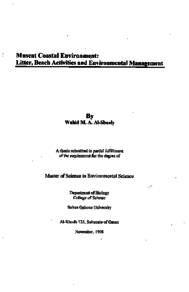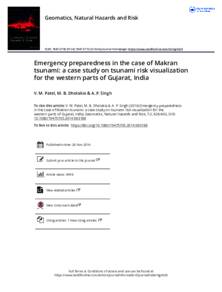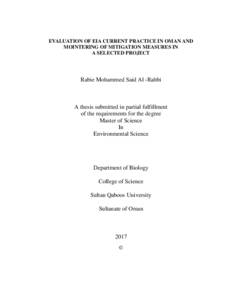Document
Muscat coastal environment : litter, beach activities and environmental management
Publisher
Sultan Qaboos University
Gregorian
1998
Language
English
English abstract
Recreational use patterns on four beaches in the Capital area (Muscat) were studied. The study showed that there is a significant difference between sites in the recreational use patterns. The beach at Darsait village was mainly used by local fishermen for their recreational and commercial activities. "Boat related activities" and "fishing related activities" were the dominant activities at this site. The Inter – Continental Beach (ICB), adjacent to a large hotel, was used by tourists, especially during weekdays in the mornings. The beach was also used by visitors after a social experience, especially in the afternoons. Azaiba picnic site (Picnic), an open beach, was used both by Omanis and resident expatriates. "Playing and sport activities" was the commonest activity at ICB and the Picnic sites. "Picnicking" activity was also common at the Picnic site. Beach visitors seeking peace, quiet and natural beauty preferred an isolated beach such as the site designated the "Wilderness" beach. The study also revealed that sites close to residential areas, like the Darsait beach, was more polluted than others. On the other hand, ICB was attended daily by hundreds of visitors, particularly in the afternoons, and it was one of the cleanest sites. The study also showed that types, quantity and mass of litter varied significantly among the four sites. All sites were more polluted during weekends than on weekdays, except the Darsait beach which was polluted more during weekdays. Backshore zone at all sites had more litter than highwater zone, especially at Darsait and the Picnic sites. Litter was mainly of local origin and some beaches were cleaned on regular basis. The questionnaire survey showed that there was a significant difference between sites in the distance visitors traveled to get to the sites. Almost all beach visitors at Darsait lived within walking distance from the beach, whereas all visitors at the Wilderness had to drive at least ten minutes to get to the beach. Off-road driving was considered by most respondents as undesirable on the beach environment. Charging an entrance fee was acceptable to most respondents provided that the fee was low. Social carrying capacities were not exceeded at any of the four sites and few respondents thought that beaches were crowded. Most respondents considered beach cleaning and better facilities as the most critical needs. It is concluded that these beaches generally operate within their social carrying capacities and that most users were satisfied with their beach experience. Finally, it is important for any management program to set prevention and mitigation measures because they can tremendously reduce the anticipated impacts of beach users on the beach environment. Such programs should involve all the affected sectors, public and private, in any decisions regarding management of the coastline. Educational campaigns through mass media can play a pivotal role in changing public attitudes toward the beach environment.
Member of
Resource URL
Category
Theses and Dissertations



